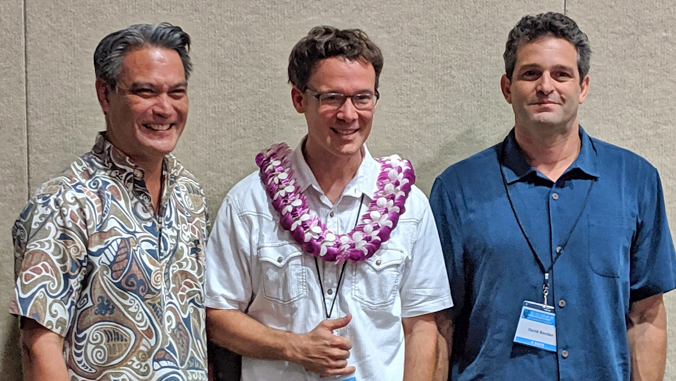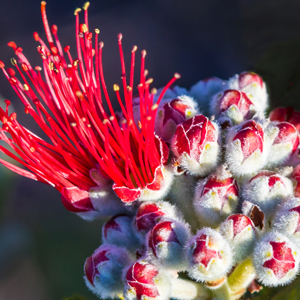
University of Hawaiʻi at Hilo Associate Professor of Geography Ryan Perroy won The ʻŌhiʻa Challenge and a $70,000 prize for his innovative use of drones and remote sensing devices to improve detection of Rapid ʻŌhiʻa Death (ROD), a fungus decimating Hawaiian forests. ROD has killed hundreds of thousands of mature ʻōhiʻa trees on Hawaiʻi Island since it was first discovered in 2014, and was recently detected on Kauaʻi and Maui.
The competition was sponsored by Conservation X Labs, the U.S. Department of the Interior’s Office of Native Hawaiian Relations, the National Invasive Species Council Secretariat and the National Park Service. The challenge was offered to create innovative and low-cost solutions to detect the invasion pathways and the spread of ROD-causing fungi in the environment.
Early detection for better response

Perroy, principal investigator at the UH Hilo Spatial Data Analysis and Visualization Labs, uses high-resolution cameras and other sensors to improve early detection of the disease across forests, including areas where signs of ROD may not yet be visible to the naked eye. This gives managers precious time to respond to outbreaks, and gives scientists better information on how the disease spreads.
He also uses drones to collect samples from the canopy of suspect trees for laboratory analysis, which increases the chances of detecting the fungus and saving time and effort of crews sampling on the ground in often challenging environments.
“Innovative solutions such as Dr. Perroy’s are a key to stopping the spread of ROD and saving our cherished ʻōhiʻa for future generations,” says Hawaiʻi Volcanoes National Park ecologist David Benitez, who presented the award to Perroy.
Alex Dehgan, co-founder and CEO of Conservation X Labs added, “We believe that exponential technologies and novel innovations are necessary to turn the tide on the growing rate of biodiversity loss. Not only could his work tackle a critical problem in Hawaiʻi but it could also yield incredible new developments in tracking fungal pathogens that threaten vital plant and agricultural species globally.”
Read the UH Hilo Stories article for more on Perroy and his research.
UH Hilo Stories video: Perroy explains his use of innovative drone and mapping technology in his ROD research
—Adapted from a news release
—By Susan Enright

